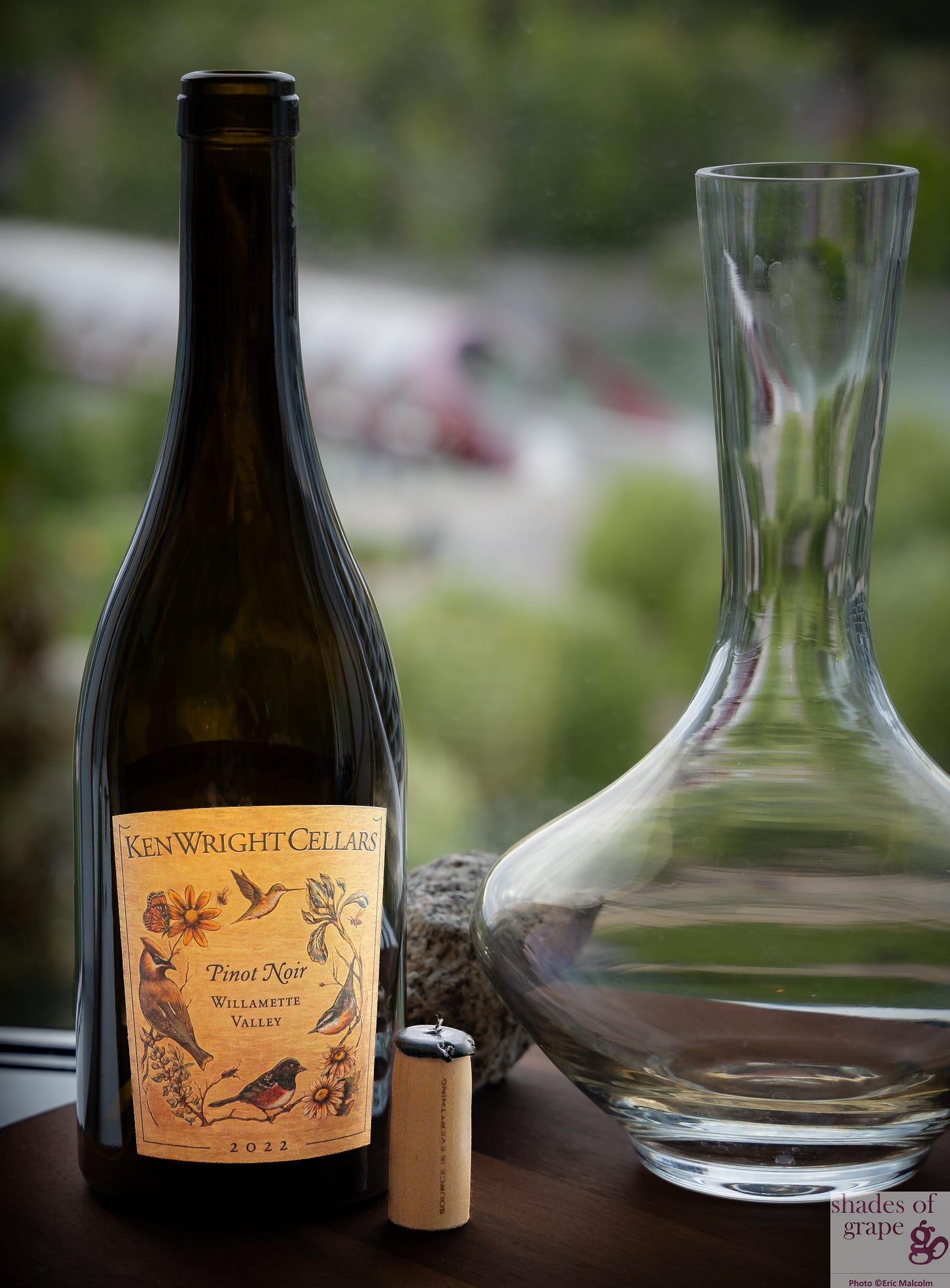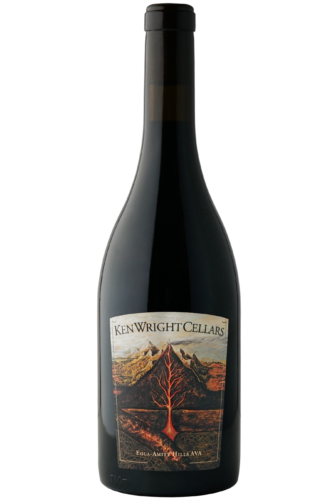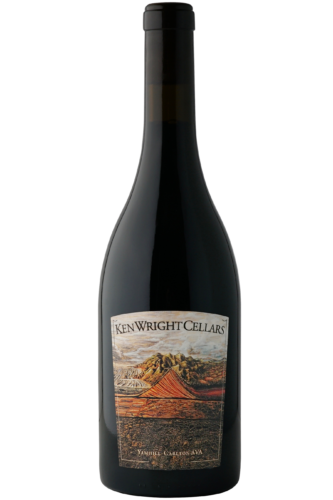News & Reviews
Recent Reviews from Owen Bargreen
Posted on July 3, 2024 in Reviews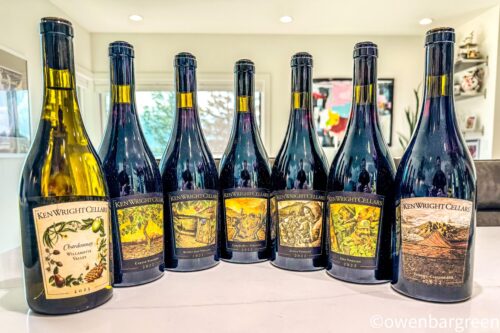
July 3, 2024
Today we share one of the greats from the Willamette Valley. The story of Ken Wright dates back to the 1980s as Ken worked as a waiter in Kentucky. At the restaurant Ken was exposed to the great wines of the world. After spending eight years winemaking in California for Ventana Vineyards and Talbott Vineyards, Ken was finally convinced to move to the Willamette Valley in 1986. He then started Panther Creek cellars and then founded his namesake winery in 1994. In 2001 he added Tyrus Evan, a Syrah based winery, to his portfolio.
The wines have been consistently great over the past ten years. I love the new 2023 Ken Wright Cellars ‘Willamette Valley’ Chardonnay (OB, 92) which is glorious for an entry level wine and shows loads of texture and tension. Even better is the 2022 Ken Wright ‘Carter Vineyard’ Pinot Noir (OB, 95) which is deep and concentrated, with some serious aging potential. Learn more about these fantastic wines at http://www.kenwrightcellars.com Here are the awesome new wines by Ken Wright.
2023 Ken Wright Cellars ‘Willamette Valley’ Chardonnay- The really good 2023 Ken Wright Cellars ‘Willamette Valley’ Chardonnay offers juicy nectarine on the palate, alongside salty orange peel, baked apple and brioche tones. Medium bodied and beautifully textured, enjoy now and over the next eight years. This is a steal at under 30 bucks retail. Drink 2024-2032- 92
Shop Willamette Valley Chardonnay
2022 Ken Wright Cellars ‘Willamette Valley’ Pinot Noir- Translucent in the glass, the medium-bodied 2022 Ken Wright Cellars ‘Willamette Valley’ Pinot Noir offers tart red currants and wild strawberry flavors alongside salty soils on the palate. Soft and neatly textured, enjoy now and over the next eight years to come. Drink 2024-2032- 91
Shop Willamette Valley Pinot Noir
2022 Ken Wright ‘Eola-Amity Hills’ Pinot Noir- The delicious 2022 Ken Wright ‘Eola-Amity Hills’ Pinot Noir shows a pretty core of red fruits on the plate, with stony minerals, red rose water, ash and shades of orange peel. Drink 2024-2032- 92
Shop Eola-Amity Hills AVA Pinot Noir
2022 Ken Wright Cellars ‘Yamhill-Carlton’ Pinot Noir- The outstanding 2022 Ken Wright Cellars ‘Yamhill-Carlton’ Pinot Noir comes from a range of sites from this AVA which was established back in 2004. This is juicy and generous Pinot Noir, offering ripe red cherry and red raspberry notes with cloves, lavender and hints of salty soils. Drink 2024-2032- 93
Shop Yamhill-Carlton AVA Pinot Noir
2022 Ken Wright Cellars ‘Canary Hill Vineyard’ Pinot Noir- The Canary Hill Vineyard is set 9.5 miles west of Salem, as this site was first planted back in 1983. Deeply colored in the glass, this delivers rich black raspberry and black cherry notes on the nose with baking spices, black truffle and shades of pie crust. The palate is deep and concentrated with good underlying verve and plenty of mouth-watering acidity. Really good to savor now, enjoy over the next ten plus years to come. Drink 2024-2036- 94
Shop Single Vineyard Pinot Noir
2022 Ken Wright Cellars ‘Bonnie Jean Vineyard’ Pinot Noir- The gorgeous 2022 Ken Wright Cellars ‘Bonnie Jean Vineyard’ Pinot Noir is sourced from this 18 acre site location that is planted on ancient marine sedimentary soils. This displays a wonderful core of salty red fruits on the palate, with kumquat rind, menthol, and shades of volcanic ash. Medium to full-bodied, with beautiful structure, this is drinking beautifully already — and has a long way to go. Drink 2024-2039- 94
Shop Single Vineyard Pinot Noir
2022 Ken Wright Cellars ‘Savoya Vineyard’ Pinot Noir- The Savoya Vineyard is located 3.5 miles north of the town of Carlton, Oregon. The vineyard is set on marine sedimentary soils, as there is a wonderfully salty essence to this wine. Tart pomegranate seed and red currant flavors mingle well with diatomaceous earth and its refined texture, with umami accents. Full-bodied and rich, enjoy now and over the next ten to fifteen years. Drink 2024-2036- 94
Shop Single Vineyard Pinot Noir
2022 Ken Wright Cellars ‘Carter Vineyard’ Pinot Noir- The 2022 ‘Carter Vineyard’ Pinot Noir comes from this Eola-Amity Hills location that dates all the way back to 1983. Mainly Pommard selection Pinot Noir, this opens with a beautiful bouquet of potpourri, red raspberry, tobacco leaf and shades of bergamot on the nose. The palate is soft and refined with a silky texture, exotic spices and great sense of weight and length. Rich and dense, with a soft mouthfeel, enjoy now and over the next fifteen years to come. Drink 2024-2039- 95
Shop Single Vineyard Pinot Noir
2022 Ken Wright Cellars ‘Shea Vineyard’ Pinot Noir- The 2022 Shea Vineyard Pinot Noir, comes from this acclaimed site which was planted by Dick Shea in the Yamhill-Carlton AVA. Richly colored, this shows a seamless texture on the palate, offering a gorgeous array of bright red fruits to mingle well with tobacco, blood orange zest, red rose water and shades of wet stone. Finishing long with bright red fruits and copious minerals, enjoy this beautiful wine now and over the next fifteen years to come. Drink 2024-2039- 95
Shop Single Vineyard Pinot Noir
I’ll Drink to That: Winemaker Ken Wright
Posted on June 12, 2024 in Press
Episode 465 of I’ll Drink to That! was released recently, and it features Ken Wright, the founder and winemaker of Ken Wright Cellars, located in Carlton, Oregon.
Ken Wright moved to Oregon in 1986, and over that period of time a lot has happened for wine in the state. Single vineyard bottlings have proliferated, additional AVAs have been introduced, significant land investments have been made, and winemaking techniques have been adjusted. Ken witnessed and participated in a lot of that change firsthand, and this interview reveals a lot of his thinking about how today is different than yesterday in Oregon, and why. It is also notable how he goes about the discussion, because Ken has a vocabularly that is fluent in the chemistry of wine as well as the biology of vines. He makes links in this interview between, for instance, the geologic setting of a vineyard, the soil health of that site, the impact of those on the wine’s fermentation, and the taste markers of the total combination in the finished glass of wine. And he further addresses aspects like climate and exposure, making clear how those affect the process before the grapes are picked, as well as what the consumer finds in the wine in the end. It is rare that someone explicitly makes the links between, for instance, oxygen in vineyard soil and a taste later in the wine, but Ken does so here. If you would like to better understand the diversity of Oregon in its different areas, the mindset changes that have happened there over time, and how those play out in the actual wines you see available on a retailer’s shelf, this is a great summary.
Listen to this episode:
I’ll Drink to That is the world’s most listened-to wine podcast, hosted by Levi Dalton. Levi has had a long career working as a sommelier in some of the most distinguished and acclaimed dining rooms in America. He has served wine to guests of Restaurant Daniel, Masa, and Alto, all in Manhattan. Levi has also contributed articles on wine themes to publications such as The Art of Eating, Wine & Spirits magazine, Bon Appetit online, and Eater NY. Check out his pictures on Instagram and follow him on Twitter: @leviopenswine
Perfect Pairings- When Wine & Food Are Better Together
Posted on June 6, 2024 in Press—foodie fun creating memorable flavor harmony
Eveline Chartier, June 4, 2024
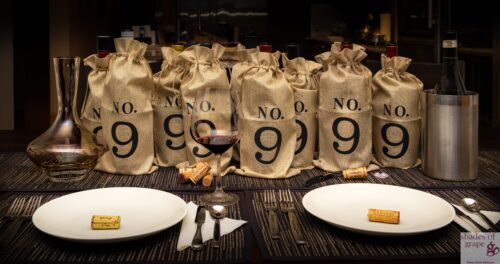
Photo by Eric Malcolm
The perfect food pairing can make a wine sing!
The goal is to have the wine and food taste better together than on their own. In other words, the sum is better than its parts. A great food pairing will bring out favorable elements in your wine and vice-versa!
Today I will guide you through this part art, part science process.
We will discuss three of the most common approaches to pairing. Keep in mind that preferred pairings will depend on the person experiencing it – this is very subjective and personal.
The key elements in food and wine that I want to discuss for pairings are:
- flavor profile
- flavor intensity
- wine’s body/food’s weight
PAUSE! I don’t understand flavor intensity in wine.
Think of a wine’s intensity as its sound volume on the nose or palate – how loudly it speaks to you! Just like food, some wines have more subtle flavors and aromas (mild cheddar cheese) while others have strong flavors (blue cheese).
Lastly, remember you can start with the food and find a wine to pair with it or vice versa.
Complementary pairings
This approach attempts to match one or more of the food and wine elements discussed above. For instance, if the wine has an anise/fennel flavor, it may pair nicely with food flavored with dried fennel. This would be a flavor profile pairing. A full-bodied wine with high intensity flavors would make a good pairing for a heavier meal with strong flavors. This would be both a flavor intensity and a body/weight pairing.
Contrasting pairings
In certain circumstances, opposites attract! Offsetting key food and wine elements results in greater overall balance. In other words, instead of matching we use opposing food and wine elements.
A good example is spicy (aka hot), bitter, or salty food pairing well with wines with sweetness. The higher the spice, the sweeter the wine should be! A spicy dish could also pair well with a low intensity wine, as the wine doesn’t compete with the food and provides a respite from the food intensity. Lastly, high acidity wines pair well with rich foods. The acidity in the wine cuts through the richness (aka fat or starch), acting as a palate cleanser or a reset after every sip.
Regional pairings
“What grows together goes together.” Pizza or lasagna pairs well with an Chianti. It is a way of saying that wines from a certain region pair very well with regional food. I learned in Austria that a Grüner Veltliner complements a Schnitzel or Goulash swimmingly! These pairings work because they either complement or contrast the key elements!
Can we walk through a specific wine?
Pairing the featured wine
Ken Wright Cellars Pinot Noir 2022 from Willamette Valley, Oregon is fresh and bright, yet it has an enticing earthiness – a contrast in itself! It also has flavors of red fresh cherry, blueberry, and blackberry, with the added complexity of earth and an especially attractive mushroom note ending with a hint of ‘fresh leather’. It has a medium flavor intensity.
Fresh leather, huh?
(Yes, that note was to get a reaction out of you!)
In this case I would zone in on the most alluring note: the mushroom!
This led me to mushroom based dishes (complementary). Since this wine has high acidity, it can hold up to rich foods (contrasting). My mind goes to mushroom risotto, mushroom soup, stuffed portobello mushrooms. Since the wine doesn’t have pronounced intensity, I would not stuff the pepper with a strong flavored cheese such as feta or chèvre nor strong flavored foods or spices. I think those would clash with the wine’s elegance.
Now my mouth is salivating.
Mine too.
Okay, but you would never pair this with fish for example?
Actually, my favorite pairing with salmon is Pinot Noir.
This Pinot Noir is medium body, matching the weight and texture of the salmon (complementary). Salmon is also an oily fish, so the wine’s high acidity would cleanse the palate after every sip producing a refreshing effect (contrasting).
What could backfire here?
If you glazed the salmon with teriyaki or hoisin sauce. As this is a dry wine, these sauces are sweeter than the wine, ergo breaking the rule that the wine needs to be sweeter than the food.
Okay, I am starting to understand this!
I will leave you with this: don’t be afraid to play around with pairings. Consider it a fun exploration! I have definitely flubbed the odd pairing. It can be tricky, particularly if you don’t know the wine. Luckily it IS just wine! Worst case scenario you choose another wine, or you finish the food then have the wine with cheese for dessert! No stress! Yay!
Ken Wright Cellars Pinot Noir 2022 from Willamette Valley, Oregon, USA
Style: New World Medium Body Red
Varieties: 100% Pinot Noir
This wine’s fresh and bright elements are beautifully contrasted by its earthy elements. It has fresh red cherry, blueberry, and blackberry, with the added complexity of earth and an especially attractive mushroom note ending with a hint of ‘fresh leather’. The tannins provide just enough grip to enhance the body without offsetting the elegance of the wine.
Best pairings: Mushroom Risotto, Mushroom Soup, Stuffed Portobello Mushrooms, Cedar-Plank Salmon, Pork Tenderloin, Soft or Semi-soft Cheeses: Brie, Havarti, or Gouda.
Serving Temperature: 14 degrees Celsius
Price: ~$37 (including 5% tax and shades of grape discount – for subscribers)
Serving Tips: Just enjoy!
SHOP KEN WRIGHT CELLARS PINOT NOIR
New 2022 Vintage Reviews from International Wine Report
Posted on April 22, 2024 in Reviews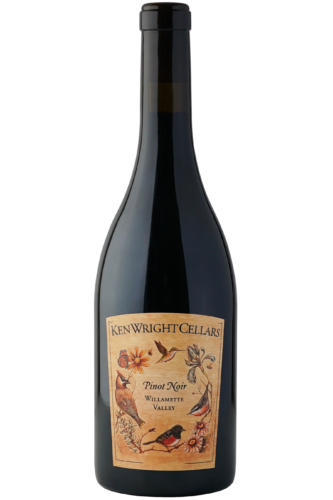
2022 Willamette Valley Pinot Noir
92 points
Easy drinking and downright delicious, the Willamette Valley Pinot Noir from Ken Wright sports a light to medium ruby core with a blueish rim. Aromatics of ripe blueberries, licorice root, crushed leaves, blood orange, and bitter herbs show more complexity and depth than they should at this price point. Rounded and medium to full-bodied, with a silky smooth mouthfeel, plush tannins, and a sporty bitter herb finish complete the wine. 2024-2030. Purchase this wine.
2022 Eola-Amity Hills AVA Pinot Noir
93 points
A bright transparent ruby core with a blue rim, the 2022 Eola-Amity Pinot Noir from Ken Wright gifts notes of mountain huckleberries, crushed black cherries, black licorice, bitter herbs, and lime zest. Medium-bodied in texture, it finishes with lovely tannins, elevated acidity, and a blue fruited note on the mid-palate. 2024-2032. Purchase this wine.
2022 Yamhill-Carlton AVA Pinot Noir
92 points
A jeweled light ruby core with a light brick rim, the 2022 Yamhill-Carlton Pinot Noir from Ken Wright is lush with earthy aromas of dried thyme and dusty country road alongside fruity notes of lemon zest, black cherries, and red currants. It’s medium-bodied, with fine-grained tannins, lemony acidity, and a long finish. 2024-2032. Purchase this wine.
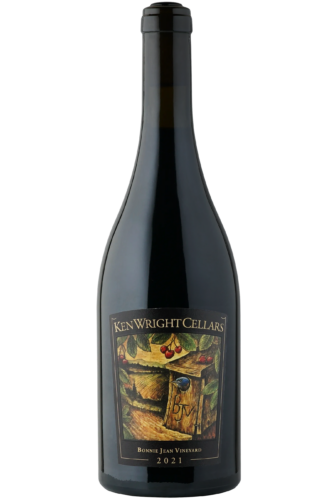
2022 Bonnie Jean Vineyard Pinot Noir
95 points
With a saturated red-ruby core with a neon purple rim in the glass, the 2022 Bonnie Jean Pinot Noir from Ken Wright gleams a bouquet of fresh purple flowers, sweet clove, black and red cherries, sweet tobacco leaf, and cedary herbs. I loved the sweet black cherry finish with a touch of grilled herbs that sits on the back palate. Full-bodied, it’s incredibly balanced with mature tannins that take on a youthful hold through the finish. 2025-2034.
(Sold out on Ken Wright Cellars bottle shop)
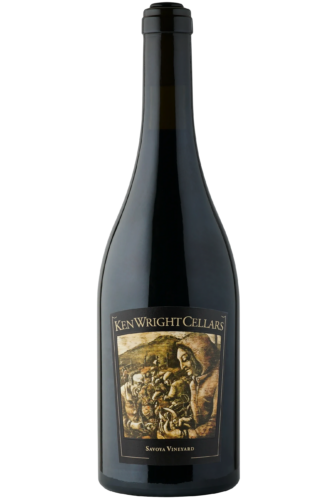
2022 Savoya Vineyard Pinot Noir
94 points
With a glistening medium ruby-brick core with a light pink rim, the 2022 Savoya Vineyard Pinot Noir is ripe with toasty spice, freshly crushed red cherries, pomegranate seeds, sweet vanilla, white chocolate, and wild forest herbs. Full-bodied, it’s a touch spicy on the palate, with notes of white pepper and ripe tannins that expand perfectly on the palate. Still a baby, so give it another year in the cellar. 2025-2034. Purchase this wine.
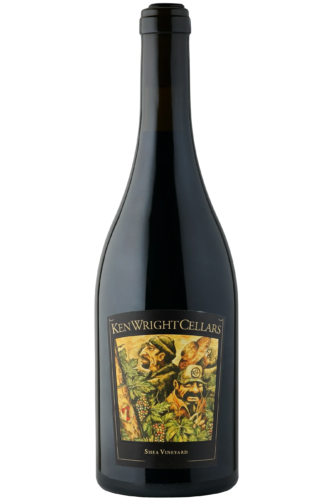
2022 Shea Vineyard Pinot Noir
96 points
Another stunning wine from master winemaker Ken Wright, this one coming from the famed Shea vineyard. It pours a bright, shimmering ruby core with a silvery rim in the glass. Rich notes of fresh strawberries, crushed raspberries, sweet vanilla beans, crushed red flowers, and shades of milk chocolate give way to elegant tannins, medium acidity, and a blue-fruit and white pepper finish. Medium to full-bodied with a crisp texture, it fills the palate with ripe tannins that expand wonderfully from start to finish. Highly recommended and editor’s choice. 2024-2034. Purchase this wine.
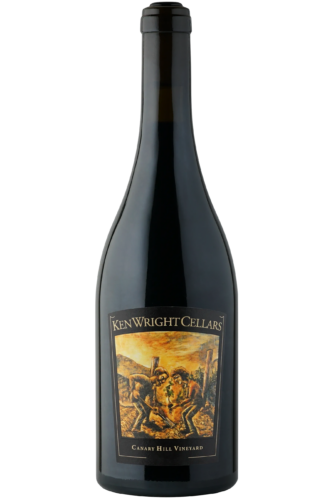
2022 Canary Hill Vineyard Pinot Noir
96 points
Another stunning wine by legend winemaker Ken Wright, this one the 2022 Canary Hill Vineyard Pinot Noir presents a gorgeous medium blue-ruby core with a glistening neon ruby rim. More elegant and encompassing than its siblings, it’s brooding with aromas of crushed huckleberries, blueberry compote, sweet Christmas spice, Early Gray tea, and grilled lemon peel. Medium-bodied, it maintains great power and purity, with supple, rounded tannins and a brisk lift on the finish. Highly recommended and editor’s choice. 2024-2034.
(Sold out on Ken Wright Cellars bottle shop)
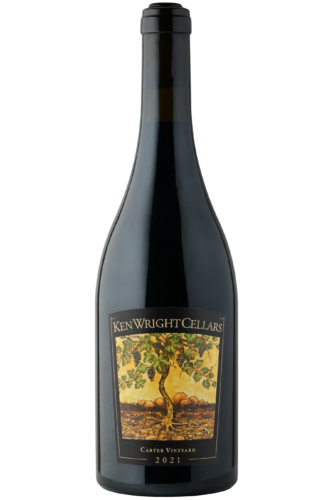
2022 Carter Vineyard Pinot Noir
95 points
A youthful deep neon blue-ruby core with a light pink rim, the 2022 Carter Vineyard Pinot Noir from Ken Wright improves with a little air after opening and exposes aromas of dusty road, crushed marionberries, dried strawberries, toasted vanilla bean, and a touch of grilled meat that adds complexity and makes it extremely interesting. It’s an intricate wine on the nose and palate that seems to morph over time in the glass. It’s savory and spicy on the finish, with a lot of saline shining through. 2024-2034.
(Sold out on Ken Wright Cellars bottle shop)
2022 & 2021 Vintage Reviews from Jeb Dunnuck
Posted on March 25, 2024 in Reviews
New Reviews from Jeb Dunnuck in recent article:
2021 Willamette Valley and Oregon Round Up Activity
Click to view article online (must be a subscriber for full article)
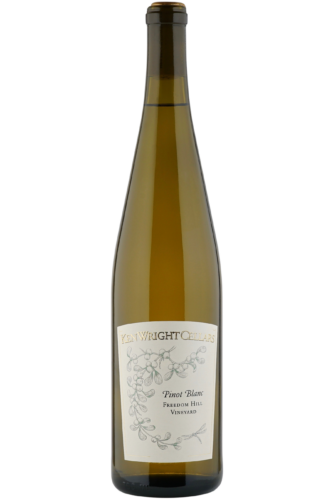
2022 Freedom Hill Vineyard Pinot Blanc- 91 points
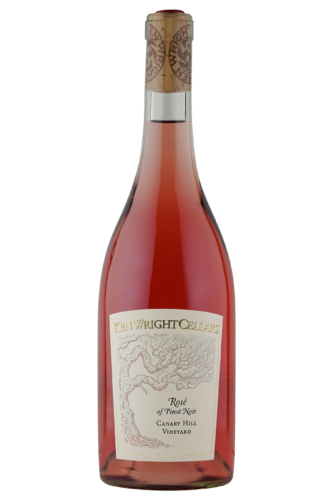
2022 Canary Hill Vineyard Rosé- 91 points
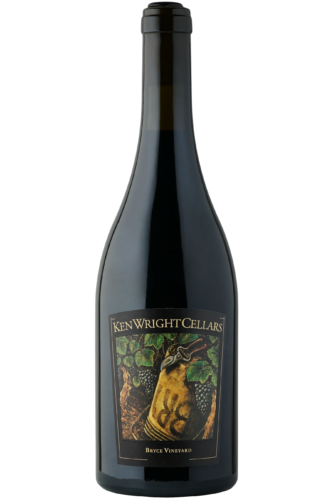
2021 Bryce Vineyard Pinot Noir- 97 points

2021 McCrone Vineyard Pinot Noir- 96 points

2021 Shea Vineyard Pinot Noir- 96 points
